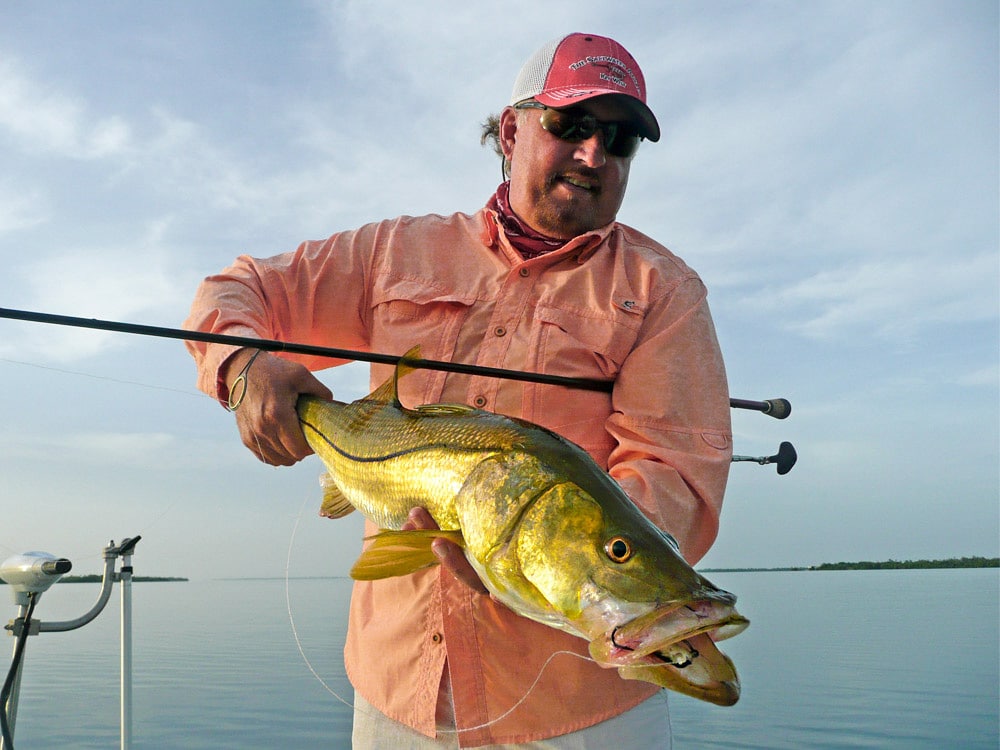
Most anglers have a preferred casting motion they use all the time, even if it doesn’t achieve the most effective presentation. But certain fishing situations call for casts that differ from those committed to muscle memory, so there’s good reason to break some old habits. At times, for instance, it’s necessary to fit the lure or bait into a tight space, and there are other occasions when it’s more important to subtly deliver your offering to a spot where the fish will find it without spooking. Here’s a list of crucial presentations, each with tips to properly execute it, that once mastered will vastly increase your hookups.
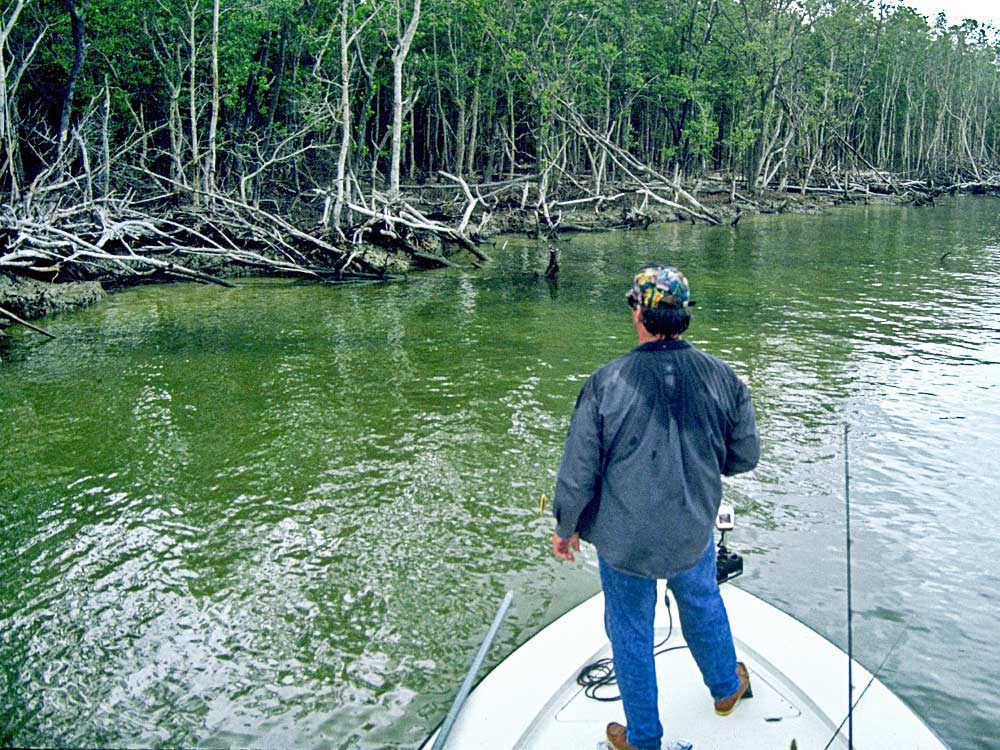
Casting Into Tight Openings
While many scoff at the mere thought of attempting to cast a lure or bait into a small opening in a mangrove-laden shoreline, the gap between two rocks or stumps, or the narrow space between a boat and the dock, numerous species relate closely to structure for both safety and forage, so hitting those nooks and crannies enables you take advantage of opportunities others forgo. You must fully commit to casting into those tight windows, however, don’t take a gingerly approach. Adjust the direction of your cast to the wind and/or boat drift, and let the lure or bait fly with gusto, making sure your rod tip ends up pointing right at the desired spot. If you are using a spinning outfit, be ready to feather the line with your free hand as it comes off the reel to keep from overshooting your mark. Should you opt for baitcasting, just apply enough thumb pressure on the spool. When you need to stop an errant cast headed way off target, simply close the bail of the spinning reel or stop the baitcaster’s spool from turning. If there’s a strong breeze, consider keeping the rod tip low during the cast. That’ll maintain the trajectory close to the water, avoiding the full brunt of the wind.

Skipping Under Docks or Overhanging Brush
Sometimes casting distance and accuracy are not enough. Many inshore game fish lurk under docks, low bridges, or overhanging brush. And when the clearance is less that a yard, learning to skip the lure underneath the structure becomes imperative. Just aim a few feet from the part you want the artificial to skip under, and make your cast, using a sidearm casting motion and enough force to get the lure to skip repeatedly on its way to the desired spot. Initially, the strength of your casting motion and your aim will take a little fine-tuning, as not applying enough oomph, or the lure touching down too far from the structure will end the cast short of the target area. Abruptly dropping the rod tip during the cast is another common mistake. It causes the lure to bounce high off the surface, killing its forward momentum. Keeping the rod paralleled to the water solves that problem. And take into account that some lures — most jigs, soft-plastics, and certain spoons — are easier to skip than others, so choose wisely.
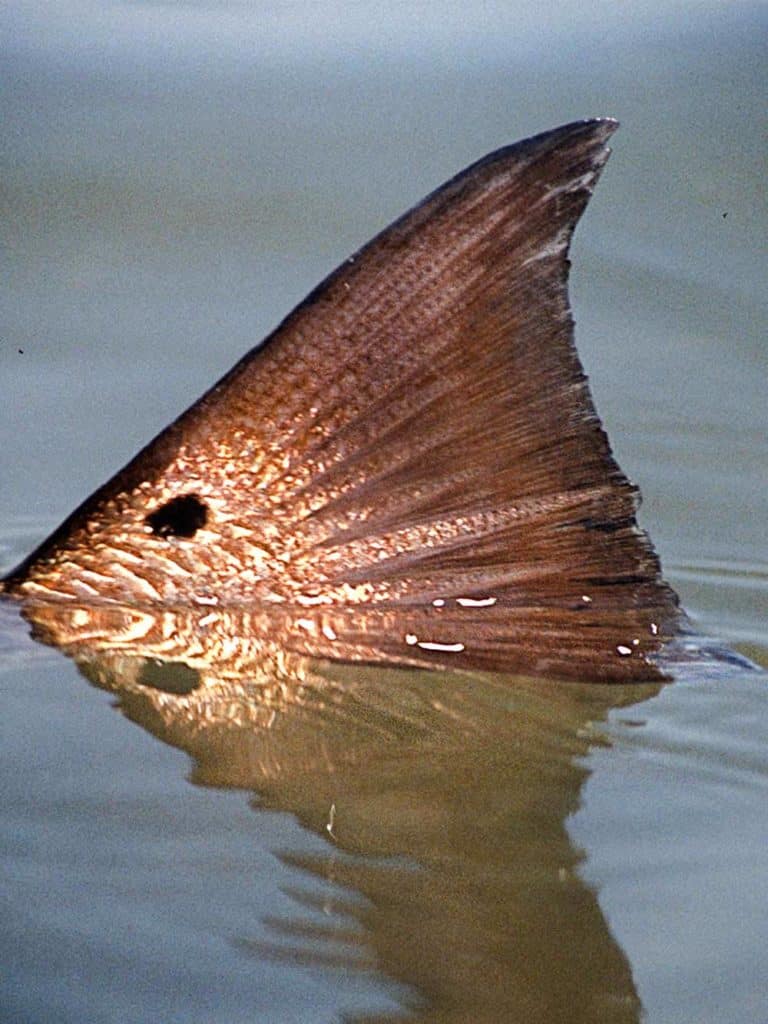
Casting To Tailing Fish
Redfish, bonefish, permit, black drum — and sometimes stripers — are known to tail (break the surface with their caudal fin) when feeding in shallow water. Most tailing fish are feeding on crustaceans on or near the bottom, so their field of vision is frequently constrained, and the strike zone shrinks accordingly — often to 2 feet or less in radius. Unless a lure or bait enters that reduced strike zone, it goes undetected. But landing your offering that close to a fish in shallow water is bound to spook your target. So the best approach is to safely land the lure a few feet away, and then retrieve it into the desired position. However, there’s a catch: the angle of the retrieve must make the bait or lure appear to be fleeing, not coming right at the fish. Predators know their food isn’t supposed to attack them.
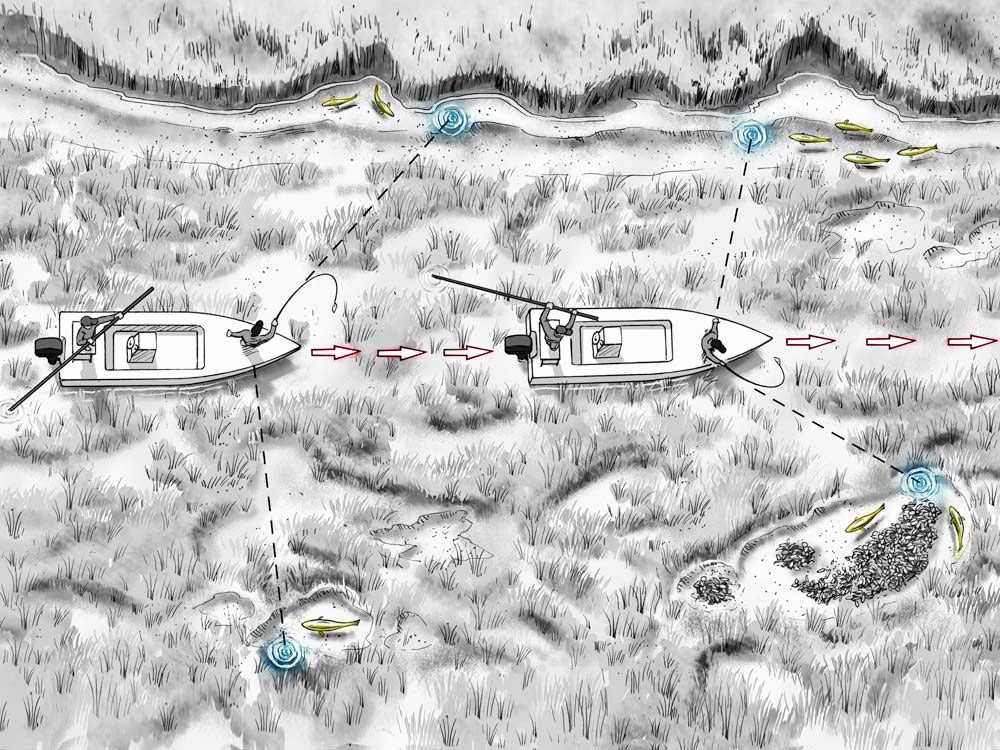
Casting To Laid-up Fish
Sight-fishing for laid-up fish, those sitting motionless out in the open or along a particular shoreline, is a tough challenge. They may seem dormant, but they’re often waiting in ambush and well aware of their surroundings. To make things more difficult, there rarely is any structure in the way, so their field of view remains unobstructed. Stealth is criticial, and so is accurate casting. The key to success lies in landing the lure with minimal noise and splash in a strategic spot that enables you to subtly retrieve the lure close enough for the fish to detect without feeling threatened. If the fish ignores your offering, take a slightly different angle the next cast, so the lure will pass closer to the fish’s head during the retrieve. Should the fish show interest and move toward the lure or bait, steadily increase the speed of the retrieve as the predator closes in.
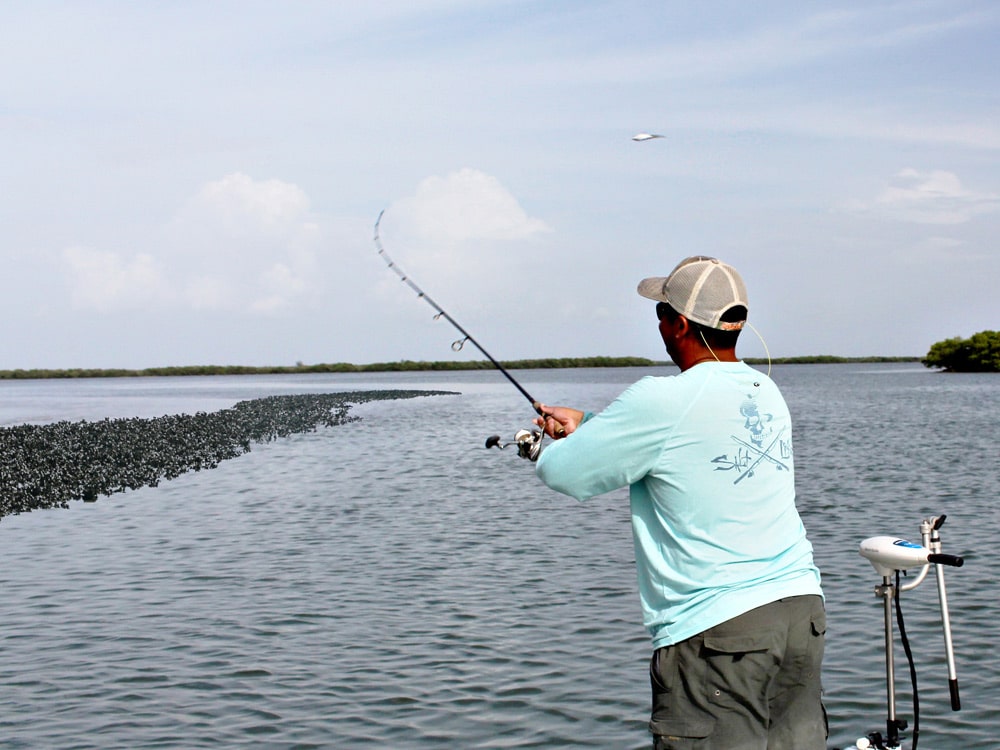
Casting Over Hurdles
A number of game fish patrol oyster bars, rock piles, fallen trees, and grass lines, and sometimes anglers find themselves on the opposite side. Sailing the cast over the protruding structure is only part of the challenge. You still need to make a natural presentation, which means retrieving the bait or lure in front of the fish, not toward it. The key here is to pick the angle most conducive for an intercepting delivery: one in which your offering crosses the fish’s path an instant before the fish actually gets there. Then the prey will appear to flee, and the fish’s predatory instinct will kick in. Once you hook the fish, immediately raise the rod with arms extended over your head to keep the line from chafing against the structure, until you work the boat or the fish around it for a safe landing.
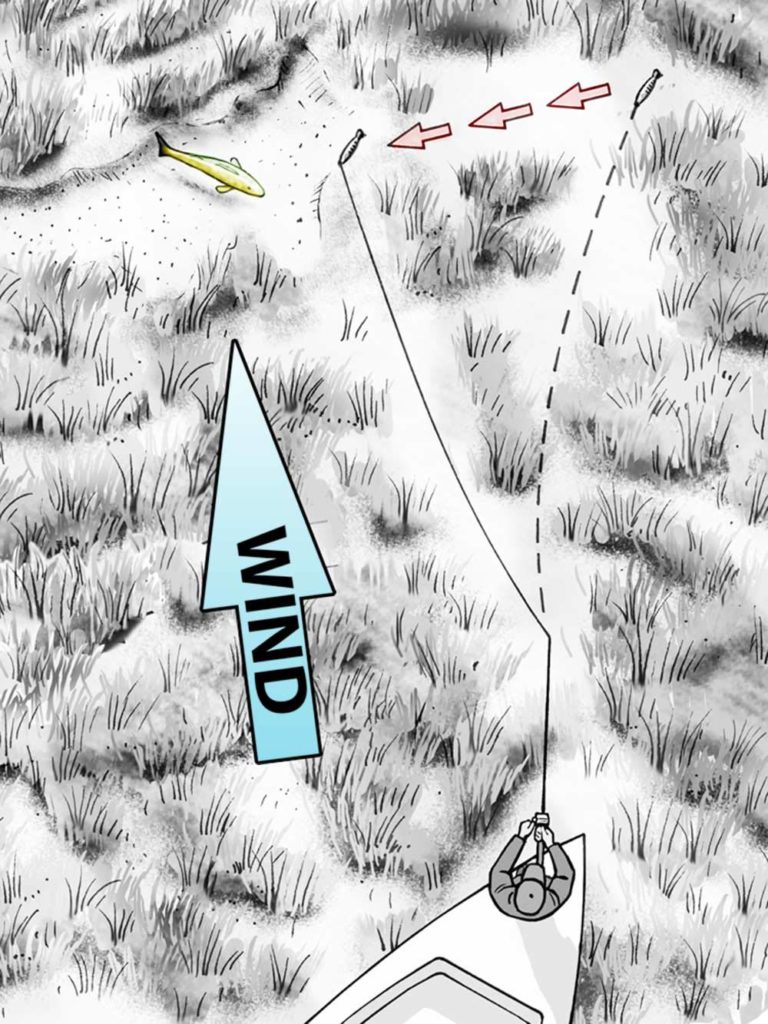
Spinnaker Cast
When the wind blows 90 to 180 degrees off your bow, you can use it to help you execute otherwise difficult presentations with relative ease. Instead of landing the bait or lure in front of a fish coming straight at you, or laid-up or tailing ahead of the boat, running the risk of spooking it, cast a safe distance to the right or left of the fish, then keep your rod tip high and let line continue to pay out of your reel for a couple of seconds after the lure hits the water. The idea is to let the wind create enough belly on your line to pull the artificial in a right angle when you retrieve it, resulting in a nifty, intercepting presentation. The trick works like a charm on skittish fish, nevertheless, when the fish strikes, you must quickly take up the slack before setting the hook.
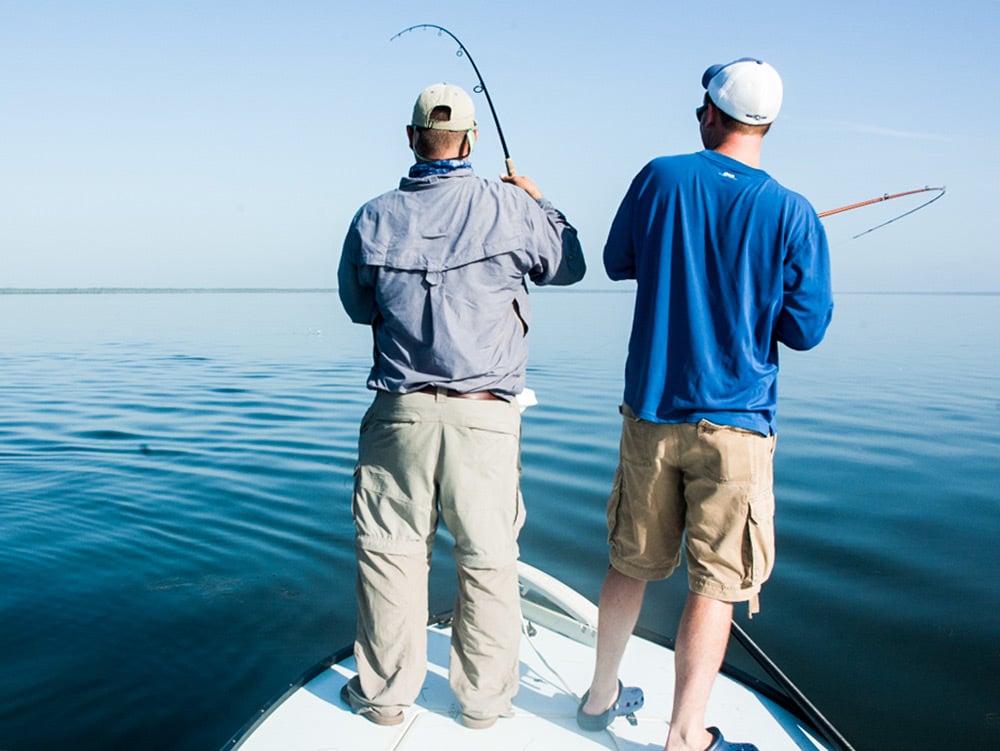
Casting To Trailing Fish
When fishing for dolphin, tuna, bluefish, jacks, cobia, bull reds and other aggressive species that travel in schools, it’s common to see other members of a hunting pack trailing a hooked fish on its way to the boat. With the proper tactic, others on board can cash in on multiple hookups without getting in the way of the angler already fighting a fish. The trick is to cast behind and slightly to the side of the trailers— so there’s no chance of crossing the other angler’s line, then retrieve the bait or lure fast enough to catch up to those hungry followers and provide precisely what they are looking for, an opportunity to get in on the action. Trailing fish are revved up, so it doesn’t take much to get them to bite. Just get your offering close enough for them to see it and bingo! Then be sure to apply side pressure with the rod to force the hooked trailer to turn away from other hooked fish.
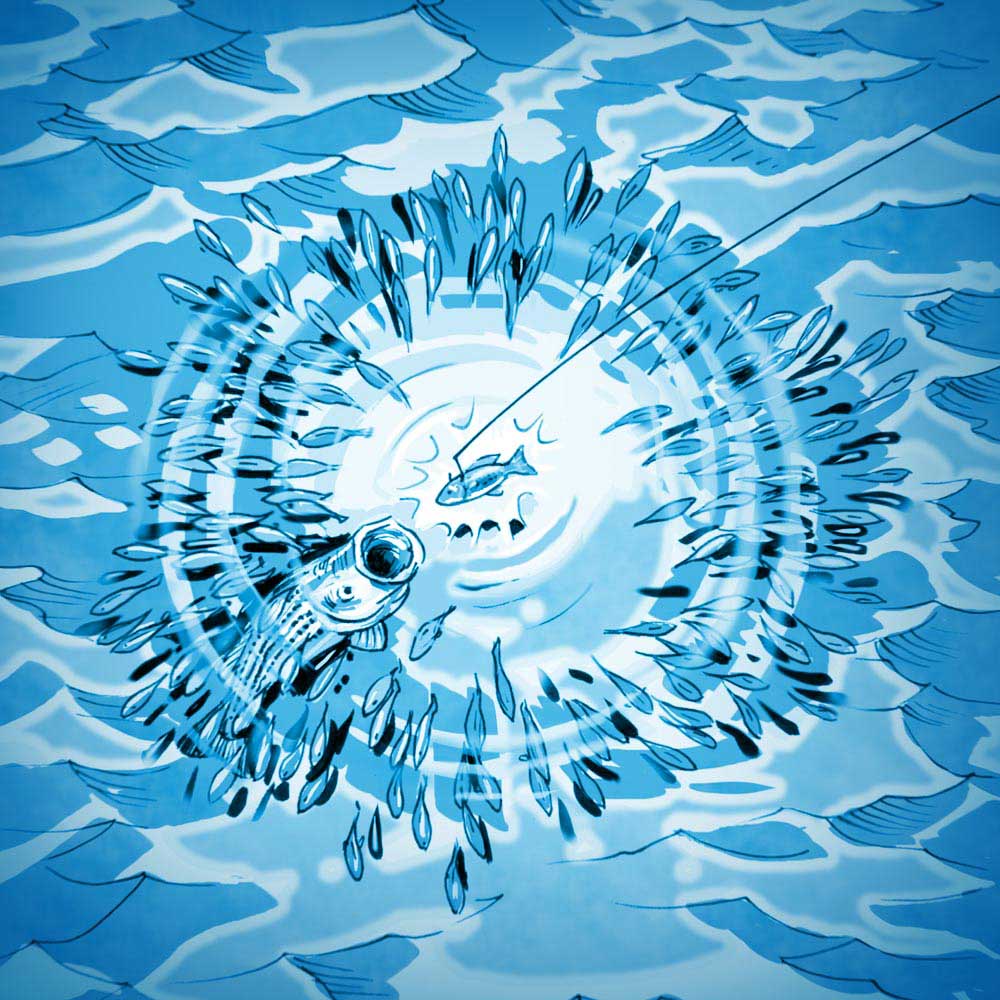
Bait Busters
Fish don’t just rush through a school of baitfish with their mouths open in hopes of grabbing a quick meal. When you see surface explosions, the fish busting bait are usually pinpointing the stragglers before launching their attack. The individuals that appear to be hurt and floundering, or just having a tough time keeping up with the rest, make the easiest prey, so casting your bait or lure to the outskirts of a baitfish school and letting it sink a bit before starting an erratic retrive is frequently the ticket. Should that fail to produce a strike, try a high-arching cast that lands the bait or lure smack in the middle of the school. All the baitfish will frantically get out of the way, leaving your offering alone in the middle of a growing hole, where it’s bound to catch the eye of any predators lurking below.
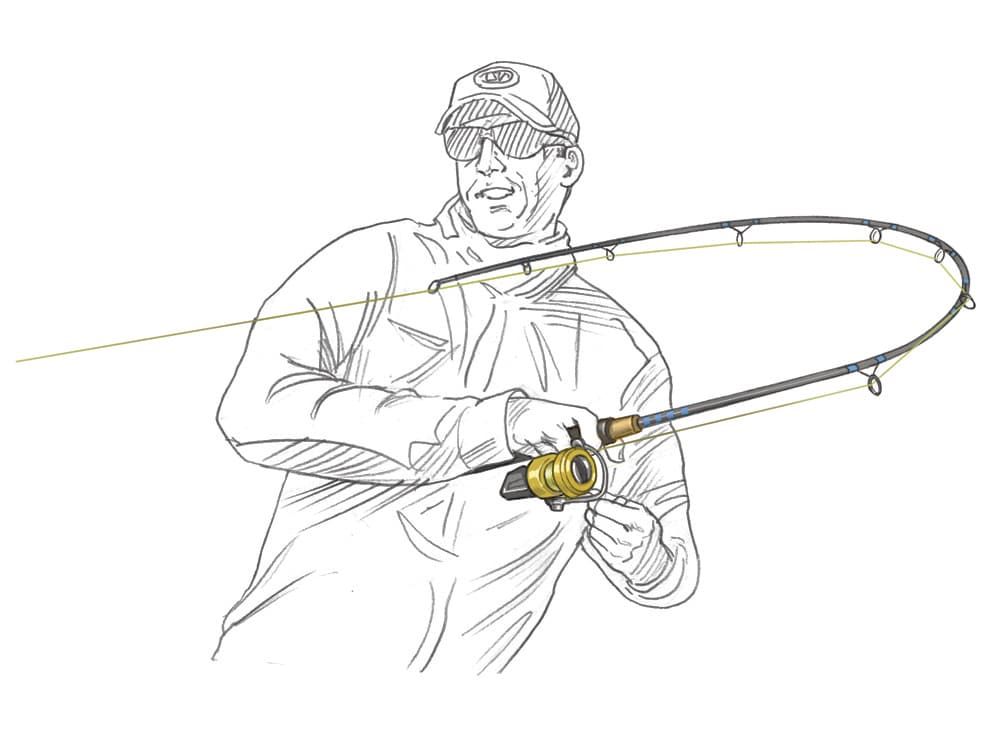
Whatever the casting situation, remember to always set the hook sideways, pulling the rod in a horizontal plane. If the fish misses its initial attack, or you whiff on the first hook-set attempt, the lure will remain in the water, just ahead of the fish, where it’ll stay in play and provide another opportunity to seal the deal.
With some practice, you’ll soon master these techniques. And once you add them to your bag of tricks, situational awareness is all it will take to greatly increase your catches.









